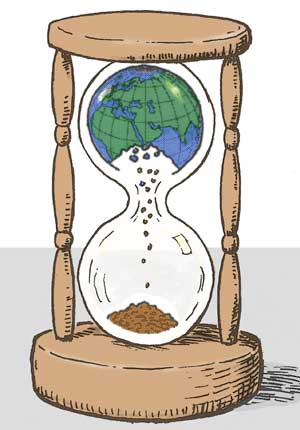An extensive report released last month warns that unsustainable human activities, such as agricultural expansion and marine pollution, are accelerating species extinction rates and causing the fastest loss of biodiversity in human history. Authored by the Intergovernmental Science-Policy Platform on Biodiversity and Ecosystem Services (IPBES), the foremost body for issues at the intersection of wildlife and society, the report is a stark reminder that humans are not the only population threatened by environmental crises.
The report estimates that, as of 2019, over one million animal species are at risk of extinction. Simultaneously, increasing levels of pollution and human alterations to land and sea habitats in the form of urbanization, agricultural conversion, and environmentally destructive fishing methods pose an exceedingly dire threat to Earth’s biodiversity.
“The biological crisis requires transformative change across economic, social, and technological factors,” said IPBES Chair Robert Watson in a speech to the seventh session of the IPBES Plenary. “Only if we start now, at every level from local to global, can nature be conserved, restored, and used sustainably.”
Almost 200 years after the industrial revolution began, conservationists are seeking such transformational change in response to an unprecedented loss in biodiversity.
“Some organisms adapt quite well to human pressures, in particular those that have large population sizes and short generation times,” Kai Chan, a lead author of the IPBES report, said in an interview with The McGill Tribune. “But there are lots of cases of species that are not well positioned to adapt fast enough.”
However, species’ inability to adapt to large-scale environmental change is not the only factor contributing to their decline.
“All of this has to be understood within the context of an ecosystem,” Chan said. “Some species can adapt to changing conditions yet do so at the expense of other species.”
Ecosystems consist of complex interactions between organisms and their environment. The effects of species extinction therefore extend not only to groups of directly threatened organisms, but to all plants and animals.
As a result of human-induced environmental changes, the ancient system of checks and balances that supports life on Earth has been devastatingly perturbed. Genetic diversity, which under normal circumstances counterbalances some of these fluctuations, is now decreasing at a notable rate.
“It is not just the loss of species that is problematic, it is the loss of their genetic diversity that limits the potential for evolution,” Andrew Hendry, a professor in the Department of Biology and contributing author to the IPBES report, said in an interview with the Tribune.
Research has shown that there has been a 5.4 to 6.5 per cent decline in the genetic diversity of populations since the industrial revolution.
“We need to maintain genetic variation within species because that genetic variation allows them to respond adaptively to environmental change,” Hendry said. “Evolution will hold the system in a stable state for longer than if you did not have evolution. At some point, if the system were to collapse, it is going to have a much harder time recovering because you have lost a lot of variation that is well suited for other conditions.”
Environmental changes induced by human activity are creating conditions that result in what scientists call rapid evolution—the ability of animals to adapt much more quickly than the millions of years it normally takes for genetic mutations to accumulate. The rate at which rapid evolution is occuring has become a novel issue for conservationists as they attempt to track and understand how species will adapt to a changing climate.
For scientists to adequately address the impending disappearance of animal populations, such as the 40 per cent of amphibian species currently at risk of extinction, they must first understand the types of changes that are occurring within ecosystems.
“Monitoring these biological, evolutionary changes are as important for informed policy decisions as are cases of ecological change,” a section of the IPBES report reads. “Strategies then can be designed to influence evolutionary trajectories so as to protect vulnerable species.”
Ecologists are now working to create more accurate models of rapid evolution that include complex changes in ecosystem dynamics. A point of difficulty in this task is trying to adequately simulate a continuously changing system, one which, due to human interference, continues to be affected by accelerated evolution.
“A shifting of paradigms is definitively part of what will need to happen,” Chan said. “The question is whether the paradigm will shift before the damage is done, or if it will occur as a consequence.”









